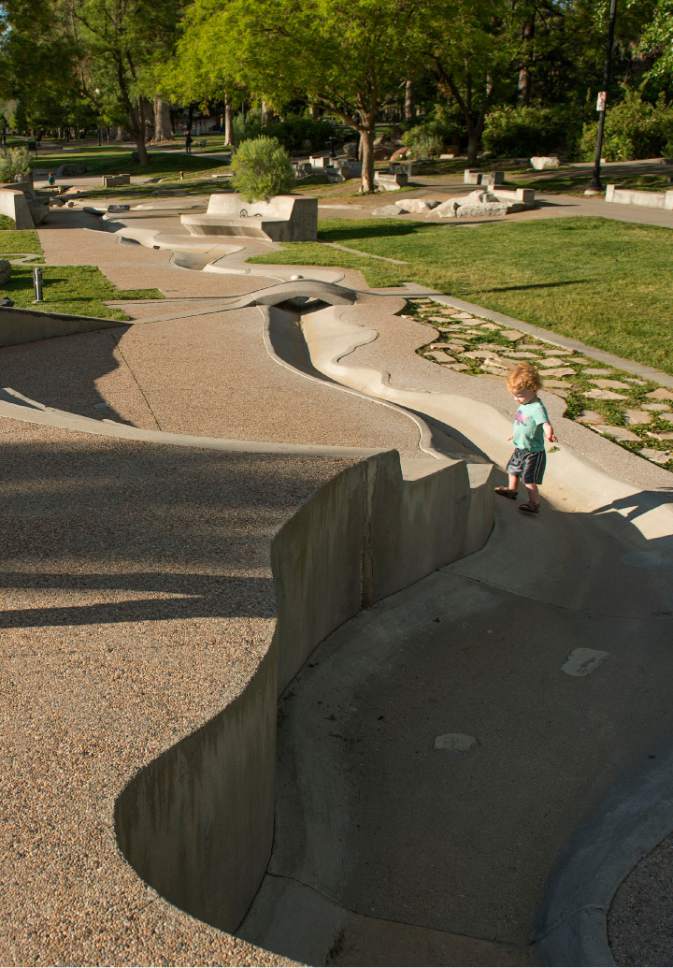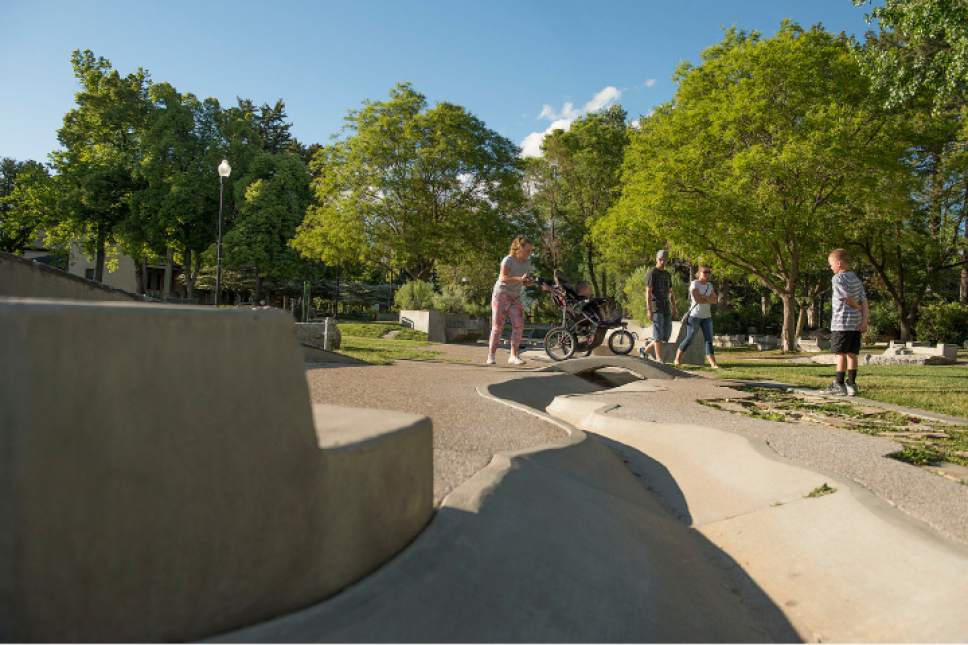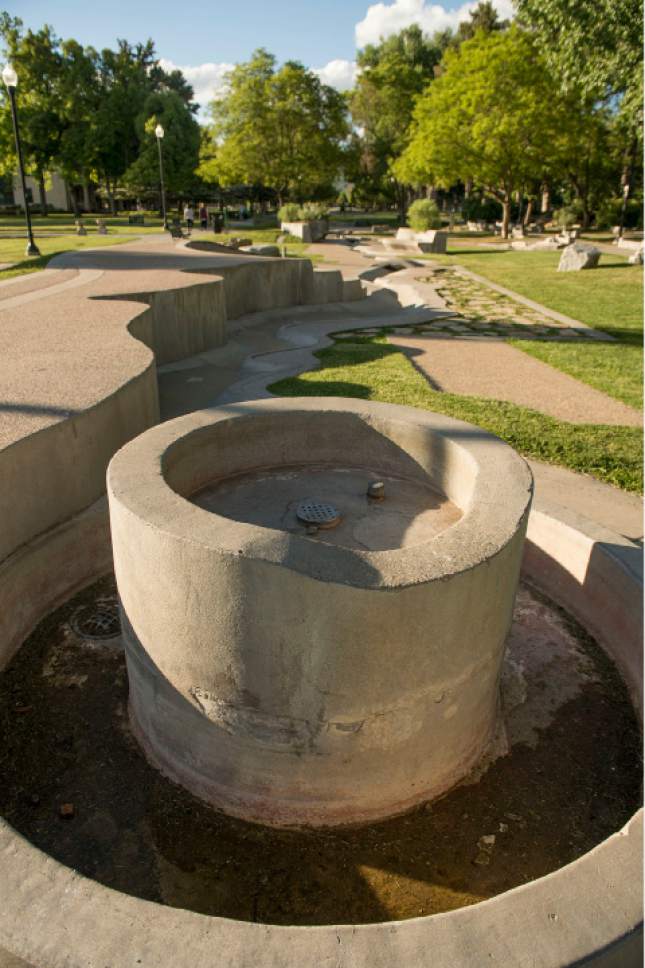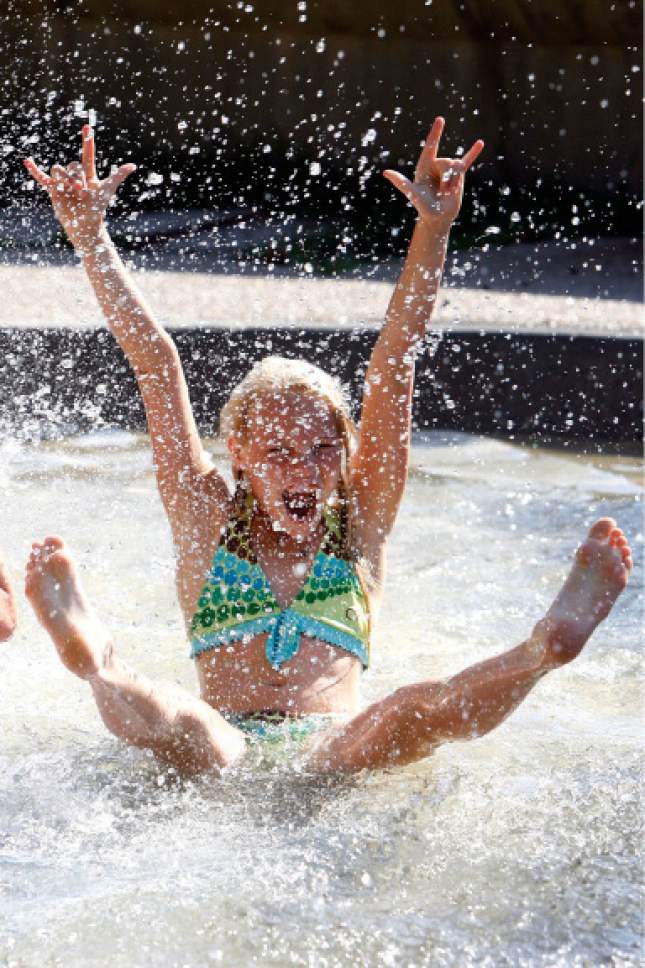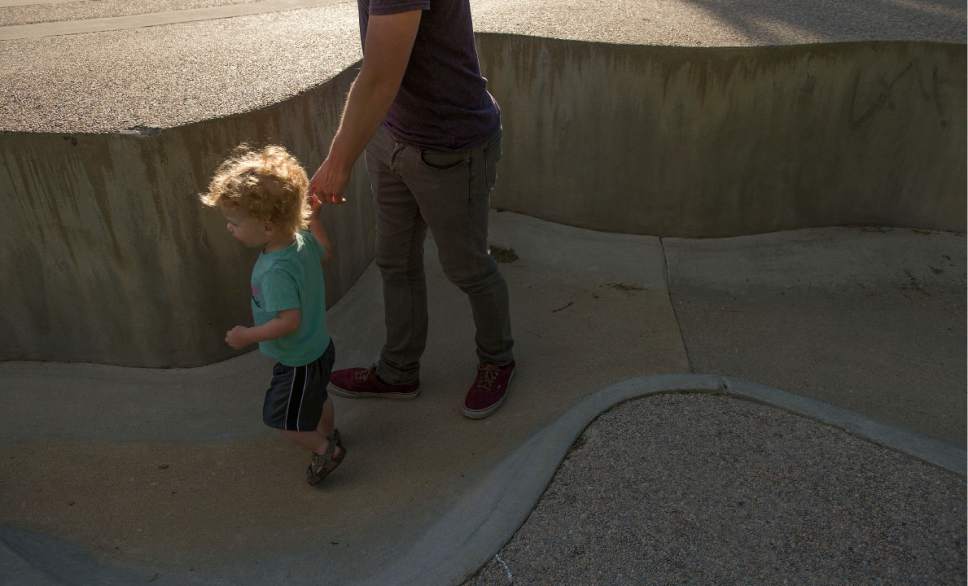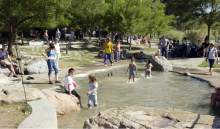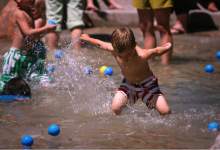This is an archived article that was published on sltrib.com in 2017, and information in the article may be outdated. It is provided only for personal research purposes and may not be reprinted.
Salt Lake City is shutting down a Liberty Park fixture because of unclean water — a problem that's plagued the fountain for more than a decade.
The city has struggled to keep water clean in Seven Canyons Fountain — a network of shallow waterways intertwined with walking paths labeled with the seven canyons that surround Salt Lake City — and says it needs $1.9 million to upgrade the sanitation system and install a drowning-prevention feature.
"It stands as a beautiful sculpture, and it will remain in Liberty Park as a sculpture," said city spokesman Matthew Rojas.
The city started regulating the fountain's water and testing it monthly in 2012, after children had played in it for years. Before that regulation, the fountain was tested irregularly because it was considered art rather than activity.
Obert Clark Tanner intended the fountain to be art when he gave it to the city in 1993, but kids splash around in the water every summer.
This season, the city shut off the water for the fountain, which is in the center of the park, because it doesn't meet Salt Lake County Health Department standards.
The city is asking private donors to fund the restoration, Rojas said.
Water regulators tried to remove organic material from the fountain, said the Health Department's Teresa Gray, but the fountain needs a new sanitation system to be up to code.
The city also would resurface the fountain's edges to prevent mud from getting into the water and clogging the system. A section where toddlers and infants play would be raised because standing water as little as 2½ inches is a drowning threat for toddlers, according to Nicholas Rupp, communications coordinator for the Health Department.
The water meets sanitation standards when the fountain is first turned on, said Rupp, but the design of the fountain doesn't filter the water. Without the water being checked every hour, the Health Department doesn't know whether the water quality reaches an unsafe standard.
"The Seven Canyons Fountain always struggled to maintain water quality standards," said Rupp. But as long as it didn't present an "imminent threat," it stayed open, he said. When it didn't meet "drinking-water quality," the city disinfected the water by hyperchlorination, Rupp said.
"It was not designed for people to be in it," Rupp said. "It was designed as artwork. Because of that, it didn't initially have the filtration and the barriers that prevent natural organic matter from contaminating the water."
In the early 2000s, the city posted signs telling people not to wade in the fountain, but people didn't stop playing in it, Rupp said.
The county began regulating interactive fountains in the mid-2000s, though it had regulated swimming pools and spas. The fountain didn't meet the definition of a swimming pool, so the board of health created guidelines for designs such as Seven Canyons Fountain and splash pads, Rupp said. Water features that were built before the requirements existed were grandfathered in until the city and county could adjust.
In 2007, an outbreak of parasite cryptosporidium, a diarrhea-causing bacteria, made its way through the city's swimming holes — including the fountain. Pools installed ultraviolet filtration systems to filter out the crypto, which is spread through feces from infected humans or animals. The germs are resistant to chlorine, but if the city raises the funds, Rojas said, it will install a UV sanitation system that removes water-borne pathogens.
A giardia case and a salmonella case also were traced back to the fountain, Rupp said.
The city has reached out to the original artist, Rojas said, so the upgrade won't harm the sculpture.
"We want to make sure that if we do restore this, we lovingly restore the fountain, because, again, it's a one-of-a-kind work of art in the city," Rojas said.
The renovation isn't in the city's budget, Rojas said.
In the meantime, the absence of water didn't prevent Blaine Hansen's toddler from playing in and around the fountain Friday evening.
"I'm trying very hard not to be a helicopter parent," Hansen said, adding that he wouldn't worry about his son playing in the water if the city hadn't shut it down. "I would let him play in a pond or a stream that wasn't filtered, so it wouldn't bother me. I can see why people would be worried about it, though."


